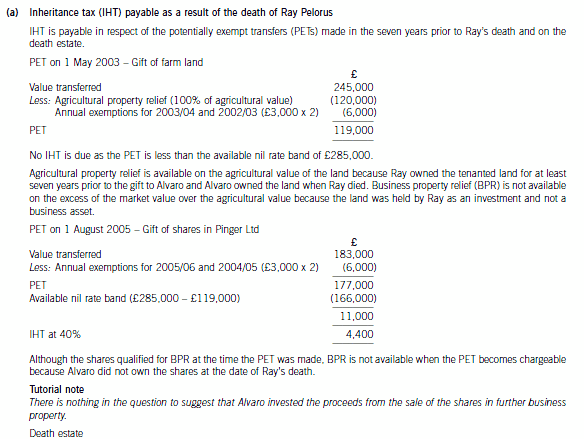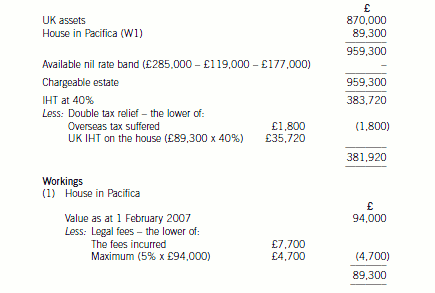ACCA考试如何在网上进行报名?
发布时间:2022-01-08
ACCA考试如何在网上进行报名?这对很多第一次参加ACCA考试的同学来说是一大难题,今天51题库考试学习网就让带领大家一起来ACCA考试相关的内容!
ACCA考试报名流程步骤一:注册
考生请登陆http://www.accaglobal.com进行网上注册,并根据个人情况提交下列材料:
①学历/学位证明(高校在校生需提交学校出具的在校证明函及所有课程考试合格的成绩单)的原件、复印件和译文。
②身份证的原件、复印件和译文;或提供护照,无需提交翻译件。
③一张两寸照片(黑白彩色均可)
④注册报名费(银行汇票或信用卡支付),请确认信用卡可以从国外付款,否则会影响注册返回时间;如果不能确定建议用汇票交纳注册费。
ACCA考试报名流程步骤二:报名
1.登录ACCA全球官网http://www.accaglobal.com/2.点击My ACCA登录,输入您的学员号和密码,进入您的个人空间。
3.选择EXAM ENTER,按照页面相关提示,进入考试报名界面,选择相关报考科目,报名即可。
ACCA考试报名流程步骤三:打印准考证
1、在ACCA官网主页http://www.accaglobal.com/en.html点击MY ACCA,进入登录页面:
2、进入MY ACCA账户后点击左侧的EXAM ENTRY:
3、进入考试信息页面,在Exam attendance docket中点击Download Docket,确认准考证信息无误后,下载并打印PDF准考证即可。一般在考前两周左右即开放打印。
ACCA考试报名流程注意事项
报考科目规定:学员在每个考季最多可报考4个科目(包括新科目和重考科目)并且每年报考不超过8门新科目。另外,学员必须按照以下3个阶段的顺序来报考ACCA相关科目。
知识模块的科目F1-F3
技能模块的科目F4-F9(F4ENG/GLO有即时机考)专业阶段的科目,SBL/SBR核心模块;P4-P7选修模块以上3个阶段内的考试科目可不分先后顺序报考,但如果前一阶段有未通过的科目,将不能跳开此科目去报后阶段的科目。
考试费用缴纳:ACCA考试有早报优惠,学员可使用双币信用卡(支持人民币及英镑结算)或者支付宝完成费用支付,如果使用汇票方式交纳考试费用,您需等待收到总部的纸质考试报名表,填写完整的考试报名表及办理汇票后一起邮寄到英国进行考试报名。
成绩有效期:专业阶段考试的时限将为7年,ACCA资格考试的基础阶段F1-F9考试将不再有通过时限。
以上就是51题库考试学习网今天为大家分享的ACCA考试报名流程及相关注意事项。如需了解更多ACCA考试相关的内容,请多多关注51题库考试学习网!
下面小编为大家准备了 ACCA考试 的相关考题,供大家学习参考。
1 Alvaro Pelorus is 47 years old and married to Maria. The couple have two children, Vito and Sophie, aged 22 and
19 years respectively. Alvaro and Maria have lived in the country of Koruba since 1982. On 1 July 2005 the family
moved to the UK to be near Alvaro’s father, Ray, who was very ill. Alvaro and Maria are UK resident, but not ordinarily
resident in the tax years 2005/06 and 2006/07. They are both domiciled in the country of Koruba.
On 1 February 2007 Ray Pelorus died. He was UK domiciled, having lived in the UK for the whole of his life. For the
purposes of inheritance tax, his death estate consisted of UK assets, valued at £870,000 after deduction of all
available reliefs, and a house in the country of Pacifica valued at £94,000. The executors of Ray’s estate have paid
Pacifican inheritance tax of £1,800 and legal fees of £7,700 in respect of the sale of the Pacifican house. Ray left
the whole of his estate to Alvaro.
Ray had made two gifts during his lifetime:
(i) 1 May 2003: He gave Alvaro 95 acres of farm land situated in the UK. The market value of the land was
£245,000, although its agricultural value was only £120,000. Ray had acquired the land on
1 January 1996 and granted an agricultural tenancy on that date. Alvaro continues to own the
land as at today’s date and it is still subject to the agricultural tenancy.
(ii) 1 August 2005: He gave Alvaro 6,000 shares valued at £183,000 in Pinger Ltd, a UK resident trading
company. Gift relief was claimed in respect of this gift. Ray had acquired 14,000 shares in
Pinger Ltd on 1 April 1997 for £54,600.
You may assume that Alvaro is a higher rate taxpayer for the tax years 2005/06 and 2006/07. In 2006/07 he made
the following disposals of assets:
(i) On 1 July 2006 he sold the 6,000 shares in Pinger Ltd for £228,000.
(ii) On 1 September 2006 he sold 2,350 shares in Lapis Inc, a company resident in Koruba, for £8,270. Alvaro
had purchased 5,500 shares in the company on 1 September 2002 for £25,950.
(iii) On 1 December 2006 he transferred shares with a market value of £74,000 in Quad plc, a UK quoted company,
to a UK resident discretionary trust for the benefit of Vito and Sophie. Alvaro had purchased these shares on
1 January 2006 for £59,500.
Alvaro has not made any other transfers of value for the purposes of UK inheritance tax. He owns the family house
in the UK as well as shares in UK and Koruban companies and commercial rental property in the country of Koruba.
Maria has not made any transfers of value for the purposes of UK inheritance tax. Her only significant asset is the
family home in the country of Koruba.
Alvaro and his family expect to return to their home in the country of Koruba in October 2007 once Ray’s affairs have
been settled. There is no double taxation agreement between the UK and Koruba.
Required:
(a) Calculate the inheritance tax (IHT) payable as a result of the death of Ray Pelorus. Explain the availability
or otherwise of agricultural property relief and business property relief on the two lifetime gifts made by Ray.
(8 marks)


(iii) Identify and discuss an alternative strategy that may assist in improving the performance of CTC with
effect from 1 May 2009 (where only the products in (a) and (b) above are available for manufacture).
(4 marks)
(iii) If no new products are available then CTC must look to boost revenues obtained from its existing product portolio whilst
seeking to reduce product specific fixed overheads and the company’s other fixed overheads. In order to do this attention
should be focused on the marketing activities currently undertaken.
CTC should consider selling all of its products in ‘multi product’ packages as it might well be the case that the increased
contribution achieved from increased sales volumes would outweigh the diminution in contribution arising from
reductions in the selling price per unit of each product.
CTC could also apply target costing principles in order to reduce costs and thereby increase the margins on each of its
products. Value analysis should be undertaken in order to evaluate the value-added features of each product. For
example, the use of non-combustible materials in manufacture would be a valued added feature of such products
whereas the use of pins and metal fastenings which are potentially harmful to children would obviously not comprise
value added features. CTC should focus on delivering ‘value’ to the customer and in attempting to do so should seek to
identify all non-value activities in order that they may be eliminated and hence margins improved.
(b) How could pursuing a corporate environmental strategy both add to CFS’s competitive advantage and be
socially responsible? (5 marks)
(b) Increasingly, firms are becoming aware of their social responsibility and their need to develop strategies that are designed to
meet this responsibility. Such responsibility can take many forms and is not a new phenomenon – many 19th century firms
looked after the housing, education and health needs of the communities where they were located. Michael Porter and Claas
van der Linde in their article ‘Green and competitive’ show how the traditional view that there is ‘an inherent and fixed tradeoff:
ecology versus economy’ is incorrect. This traditional view sees the benefits of government imposed environmental
standards, causing industry’s private costs of prevention and clean up – ‘costs that cause higher prices and reduced
competitiveness’. Porter and Linde argue that with properly designed and implemented environmental standards, firms will
be encouraged to produce innovations that use a range of inputs more efficiently, e.g. energy, labour, raw materials, and in
so doing increase resource productivity and in offsetting the costs of environmental improvement make industry more not less
competitive. All too often in their opinion, companies resort to fighting environmental control through the courts rather than
using innovation to increase resource productivity and meet environmental standards – ‘environmental strategies must
become an issue for general managers’.
CFS are, therefore, correct in seeing environmental standards as a positive step towards becoming more not less competitive.
Key stakeholders in the form. of both government and customers are looking to their suppliers to become more ‘green’. These
challenges are increasingly international and global. Building in positive environmental strategies can help CFS differentiate
itself and through improved resource productivity become more competitive. Clearly, they will need the environmental
scanning devices to become aware of environmental legislation and change. Awareness then can lead to analysis in the
monitoring of macro environmental challenges and the development of a SWOT analysis to match the company’s strengths
and weaknesses against the threats and opportunities created by environmental standards. Tools of strategic analysis such as
PEST, five forces and value chain analysis lend themselves to understanding the significance of the environmental change
and how it can stimulate innovation and, through innovation, competitive advantage.
(c) What changes to Churchill’s existing marketing mix will be needed to achieve the three strategic goals?
(15 marks)
(c) Each of the strategic goals will have a profound impact on the marketing mix as it currently exists. As each goal affects the
market position of Churchill developing an appropriate marketing mix will be the key to successful implementation of the
overall growth strategy. The product, the brand and the reputation it creates are at the heart of the company’s marketing
strategy. Their focus on the premium segment of the market seems a sensible one and one which allows a small family-owned
business to survive and grow slowly. Evidence suggests this is a luxury indulgence market reflecting changing consumer tastes
and lifestyles. Managing the product range will be a major marketing activity. While the core products may develop an almost
timeless quality there will be a need to respond to the product innovations introduced by its much larger competitors. The
company’s emphasis on the quality of its products resulting from the quality of its ingredients is at the heart of its competitive
advantage. Growing the product range will also bring the danger of under performing products and a consequent need to
divest such products. Packaging is likely to be a key part of the products’ appeal and will be an area where constant innovation
is important.
Pricing raises a number of issues. Why is Churchill’s core product priced at £1 less than its immediate competition? What is
the basis on which Churchill prices this product? Each of the methods of pricing has its advantages and disadvantages. Using
cost plus may create an illusion of security in that all costs are covered, but at the same time raises issues as to whether
relevant costs have been included and allocated. Should the company price in anticipation of cost reductions as volume
increases? Should the basis for pricing be what your competitors are charging? As a luxury product one would assume that
its demand is relatively price inelastic: a significant increase in price e.g. £1 would lead to only a small reduction in quantity
demanded. Certainly, profit margins would be enhanced to help provide the financial resources the company needs if it is to
grow. One interesting issue on pricing is the extent to which it is pursuing a price skimming or price penetration policy –
evidence from the scenario suggests more of a price skimming policy in line with the luxury nature of the product.
Place is an equally important issue – the vertical integration strategy of the company has led to company-owned shops being
the main way customers can buy the product. At the same time, this distribution strategy has led to Churchill’s sales being
largely confined to one region in the UK – although it is the most populous. If Churchill has a desire to grow, does it do this
through expanding the number of company owned and franchised outlets or look for other channels of distribution in
particular the increasingly dominant supermarket chains? Each distribution strategy will have significant implications for other
elements in the marketing mix and for the resources and capabilities required in the company.
Finally, promotion is an interesting issue for the company. The relatively recent appointment of a sales and marketing director
perhaps reflects a need to balance the previous dominance of the manufacturing side of the business. Certainly there is
evidence to suggest that John Churchill is not convinced of the need to advertise. There are some real concerns about how
the brand is developed and promoted. Certainly sponsorship is now seen as a key part of the firm’s promotional strategy. The
company has a good reputation but customer access to the product is fairly limited. Overall there is scope for the company
to critically review its marketing mix and implement a very different mix if it wants to grow.
The four Ps above are very much the ‘hard’ elements in the marketing mix and Churchill in its desire to grow will need toensure that the ‘softer’ elements of people, physical evidence and processes are aligned to its ambitious strategy.
声明:本文内容由互联网用户自发贡献自行上传,本网站不拥有所有权,未作人工编辑处理,也不承担相关法律责任。如果您发现有涉嫌版权的内容,欢迎发送邮件至:contact@51tk.com 进行举报,并提供相关证据,工作人员会在5个工作日内联系你,一经查实,本站将立刻删除涉嫌侵权内容。
- 2020-07-04
- 2020-01-10
- 2021-01-13
- 2021-01-13
- 2020-07-15
- 2020-05-05
- 2020-05-01
- 2021-04-25
- 2020-09-03
- 2021-04-02
- 2021-01-22
- 2021-09-18
- 2020-01-09
- 2020-01-10
- 2019-12-28
- 2020-01-10
- 2019-12-29
- 2020-01-08
- 2020-01-09
- 2020-01-09
- 2020-01-08
- 2020-09-03
- 2021-01-16
- 2020-01-09
- 2020-01-08
- 2020-09-03
- 2021-04-01
- 2020-01-08
- 2020-01-09
- 2020-01-09